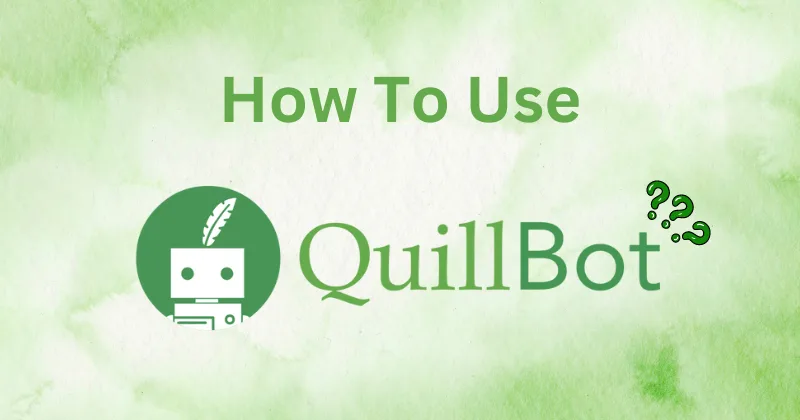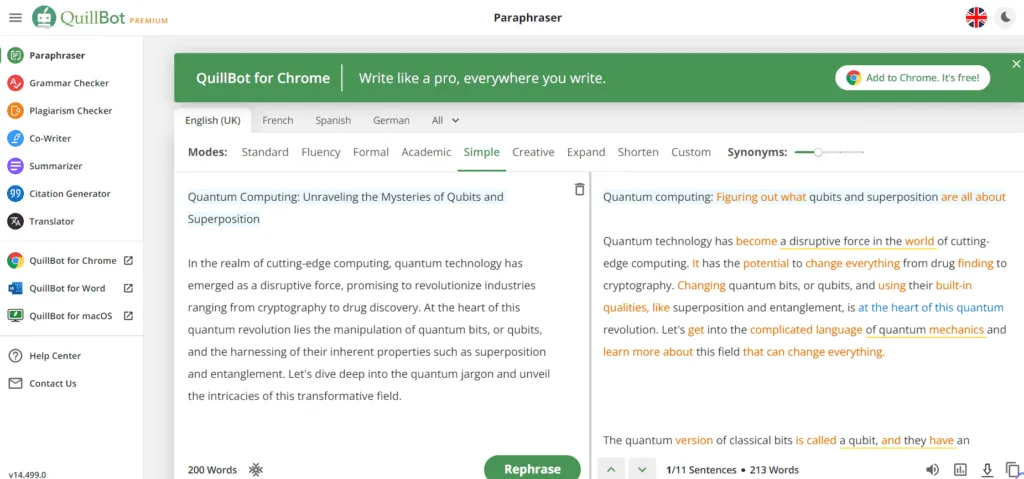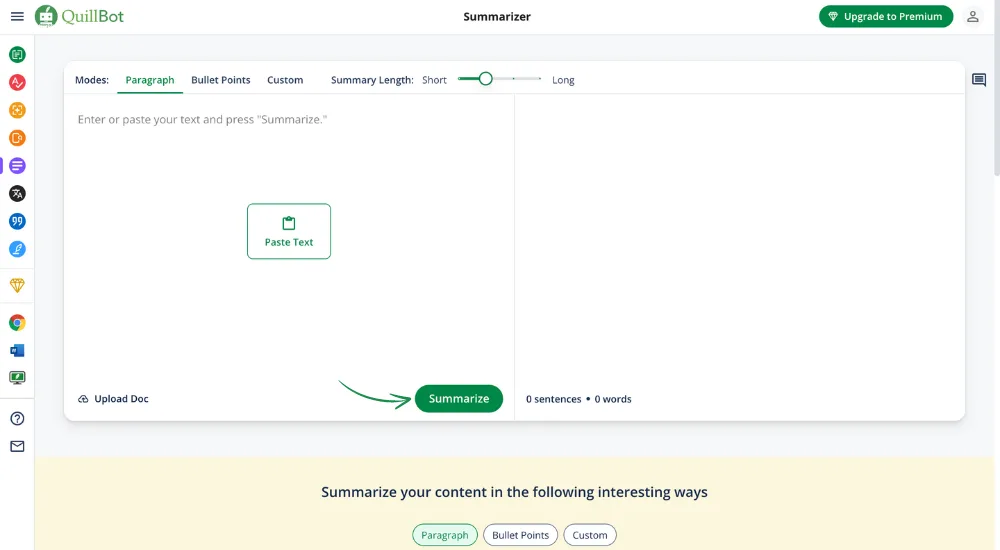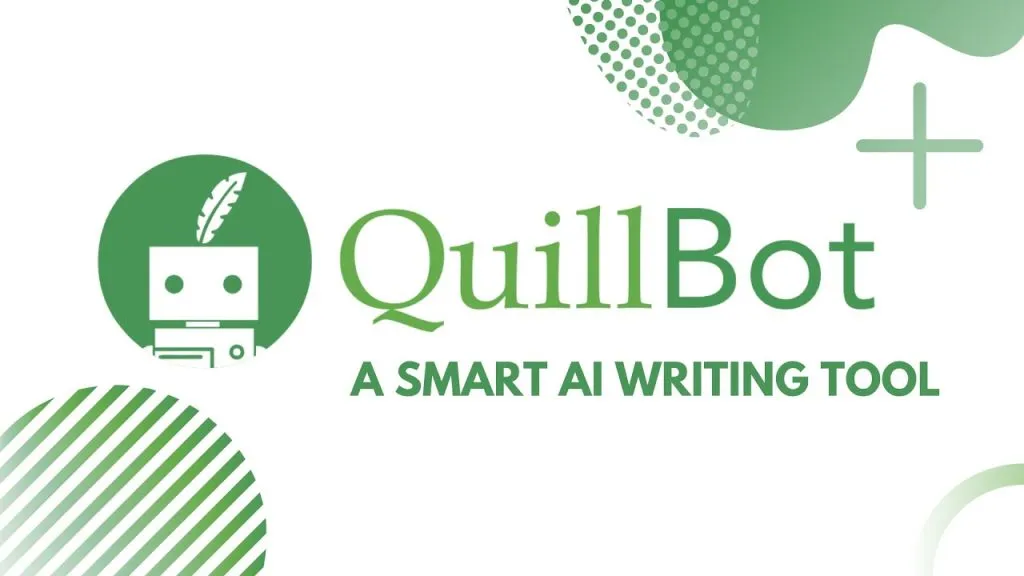
Cue the spooky piano music—yep, we’re diving into essay writing. That means tackling structure, styles, and step-by-step instructions. Scary? Maybe. But only until we break it all down for you.
Once we’re done, writing an essay won’t feel like a monster under your bed—it’ll be more like a well-trained puppy. With the tips and techniques we’re about to share on ways to use Quillbot, you’ll be writing with confidence in no time.
The 7 Steps to Writing an Essay
Let’s get to the good part: the process. We’ve broken essay writing into 7 super-simple steps, with clear explanations along the way.
Follow these, and you’ll never dread an essay assignment again. Pinky swear.
Step 1: Know What’s Being Asked
Sounds obvious, but many students skip this part and dive straight into writing.
Big mistake. Before you do anything, understand:
- What’s the word count?
- What format or citation style is required?
- What kind of essay do you need to write?
Make sure you’re clear on all expectations—including the purpose and type of essay. If anything is confusing, ask your instructor. Getting it right upfront saves major headaches later.
The 4 Primary Types of Essays
Each essay falls under one of these main categories (which match up with writing styles you’ve probably heard of).
- Narrative Essay
Think storytelling. Narrative essays include personal stories, reflections, or book reports. The goal is to follow a theme or motif through a clear sequence.
- Argumentative Essay
Unlike persuasive writing, which appeals to emotion, argumentative essays are grounded in facts and logic. The aim? Convince readers by showing your reasoning, not just telling them what to believe.
- Descriptive Essay
This one paints a picture. Using vivid language and sensory detail, the writer describes a person, place, object, or event in depth.
- Expository Essay
Here, the goal is to explain—not persuade. An expository essay gives readers a factual, unbiased overview of a topic, breaking it down clearly and concisely.
Step 2: Brainstorm Topics
Now that you know what kind of essay you’re writing, it’s time to decide what you’ll write about.
Feeling stuck? Don’t worry.
Start by listing anything that comes to mind—no judgment. Let creativity lead, and keep your internal critic on mute. Use techniques like mind mapping to organize ideas visually. (Pro tip: Online mind map makers make this a breeze.)
Let’s say you’re working on a narrative essay for a book report. Dig into related themes using research tools. For instance, if you’re writing about To Kill a Mockingbird, you might find relevant topics like “Southern Gothic,” “The Great Depression,” or “civil rights movements”—all great angles to explore.
As you collect sources, use a citation tool to keep them organized. Even if you don’t use all of them, you’ll have a solid source list ready to go when it’s time to cite.
Step 3: Choose Your Angle
Your “angle” is your unique perspective or stance on the topic.
It’s how you make your essay yours. For example, if your topic is UFOs, you might argue:
- They’re just secret military aircraft
- or
- They’re proof of extraterrestrial life
Whatever your take, you’ll need evidence to support it.
To save time, use a summarizer tool to quickly condense your research sources. That way, you get the main points fast—perfect for shaping your argument efficiently.
Remember: essay writing doesn’t have to feel like a never-ending chore. With the right tools and planning, it can be smooth, structured, and even satisfying.
Step 4: Create an Outline
One of the biggest mistakes writers make is skipping the outlining phase. Seriously—don’t do it.
Skipping your outline is often what makes the essay writing process harder than it needs to be.
An outline is your roadmap. Once you build it, writing becomes a matter of filling in the blanks. It helps you:
- Organize your ideas logically
- Spot where you already have solid evidence
- Identify areas needing more support or clarification
- Plan the overall structure of your essay
A simple bulleted list works perfectly for most outlines. Here’s a quick tip: include your topic sentences in your outline. These are the first sentences of each paragraph, acting as transitions and mini-thesis statements.
Writing topic sentences early on helps:
- Create smooth transitions between paragraphs
- Ensure your argument flows logically
- Make drafting much easier later
Having these key sentences prepared means fewer moments of confusion during your first draft. No more asking, “Wait, what was I going to say here?”
Step 5: Write Your First Draft
Here’s the golden rule: don’t edit while you write.
The drafting phase is about getting your ideas down—no matter how messy. Just follow your outline and type away. Let your thoughts flow, even if they’re not perfect.
Expect a few writing challenges like procrastination, creative fatigue, or writer’s block. That’s totally normal.
To stay on track, you can:
- Use an AI paraphrasing tool to spark new ways to express your thoughts
- Reword awkward sentences to keep your momentum going
- Explore fresh phrasing to avoid repetition and keep your writing engaging
Step 6: Edit Like a Pro
Finished your draft? Great—but don’t submit just yet. Now it’s time to revise and polish your work. Editing is where you turn rough writing into something refined and compelling.
Follow this editing process for best results:
- Content Editing – Rework confusing sections, improve structure, and eliminate repetition
- Grammar & Fluency – Check spelling, punctuation, sentence structure, and vocabulary
- Style & Formatting – Make sure citations, formatting style, and consistency are spot-on
Pro Tip: Use tools like QuillBot’s Word Counter or Summary Generator to:
- Review your word count
- Test readability
- Condense long sections of text
Finally, read your essay out loud. You’ll be amazed at how many little issues you catch just by hearing it.
Step 7: Submit Your Essay
Once everything is polished and triple-checked, you’re ready to hit submit. Congratulations!
Time-Saving Writing Tools to Help You Along the Way
Don’t forget—you don’t have to go through the essay process alone.
There are tools built specifically to help you save time and energy at every stage:
- QuillBot Flow – Helps manage the entire writing process in one workspace
- Summarizer – Quickly condenses source material or drafts
- Paraphraser – Rewrites content to improve clarity or avoid repetition
- Grammar Checker – Catches errors in fluency, spelling, and punctuation
- Title Generator – Creates engaging titles to capture attention
- With these tools in your corner, essay writing becomes a whole lot less stressful—and way more efficient.
Final Thoughts – Ways To Use Quillbot To Write Essay
Essay writing can feel intimidating—but it doesn’t have to stay that way. When you break the process down into simple steps and use the right tools, it becomes much easier to manage (and even enjoy).
Whether you’re brainstorming ideas, drafting your first paragraph, or editing your final version, tools like QuillBot’s Flow, Paraphraser, Summarizer, and Grammar Checker are here to help at every stage. They’re designed to take the pressure off and make writing faster, smarter, and less frustrating.
So if you’re ready to stop stressing and start writing with confidence—
Try QuillBot today and experience the difference for yourself.



